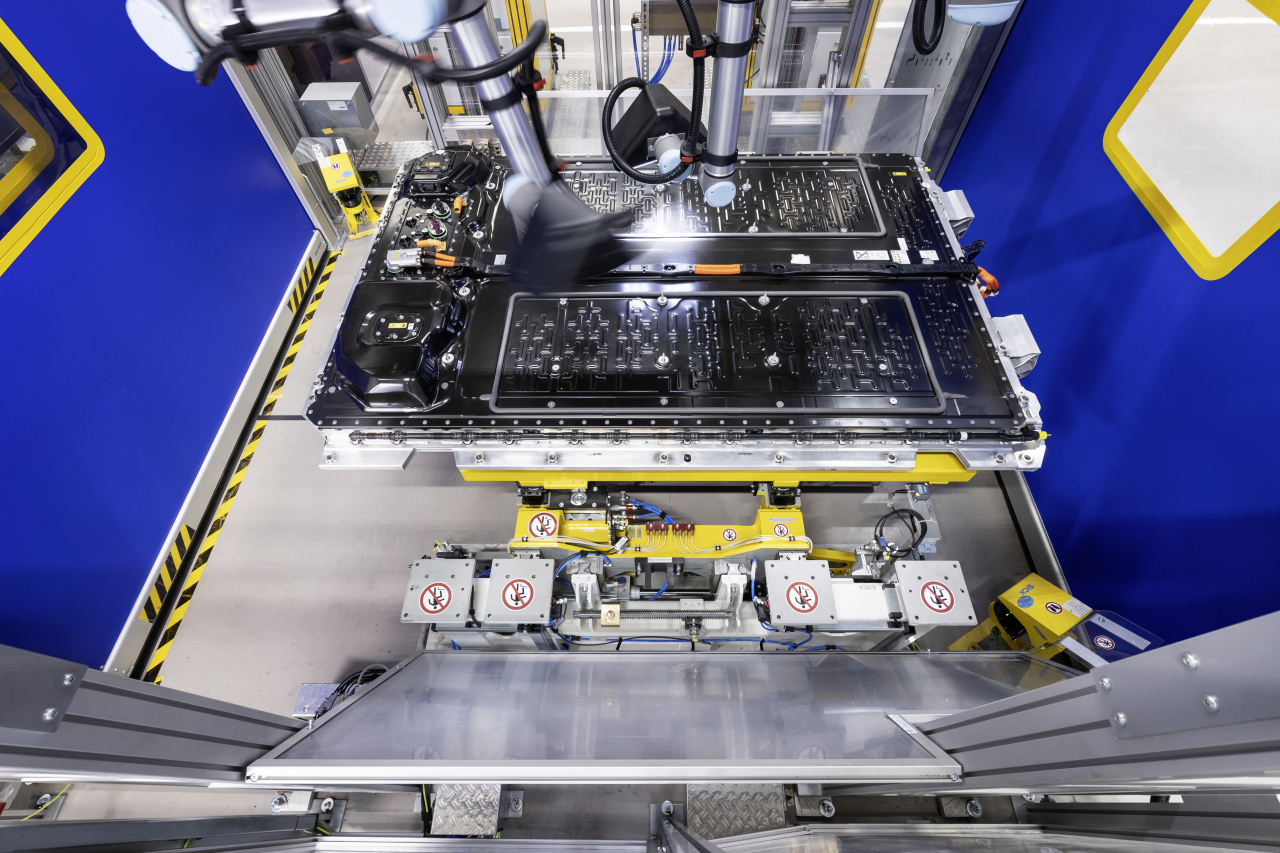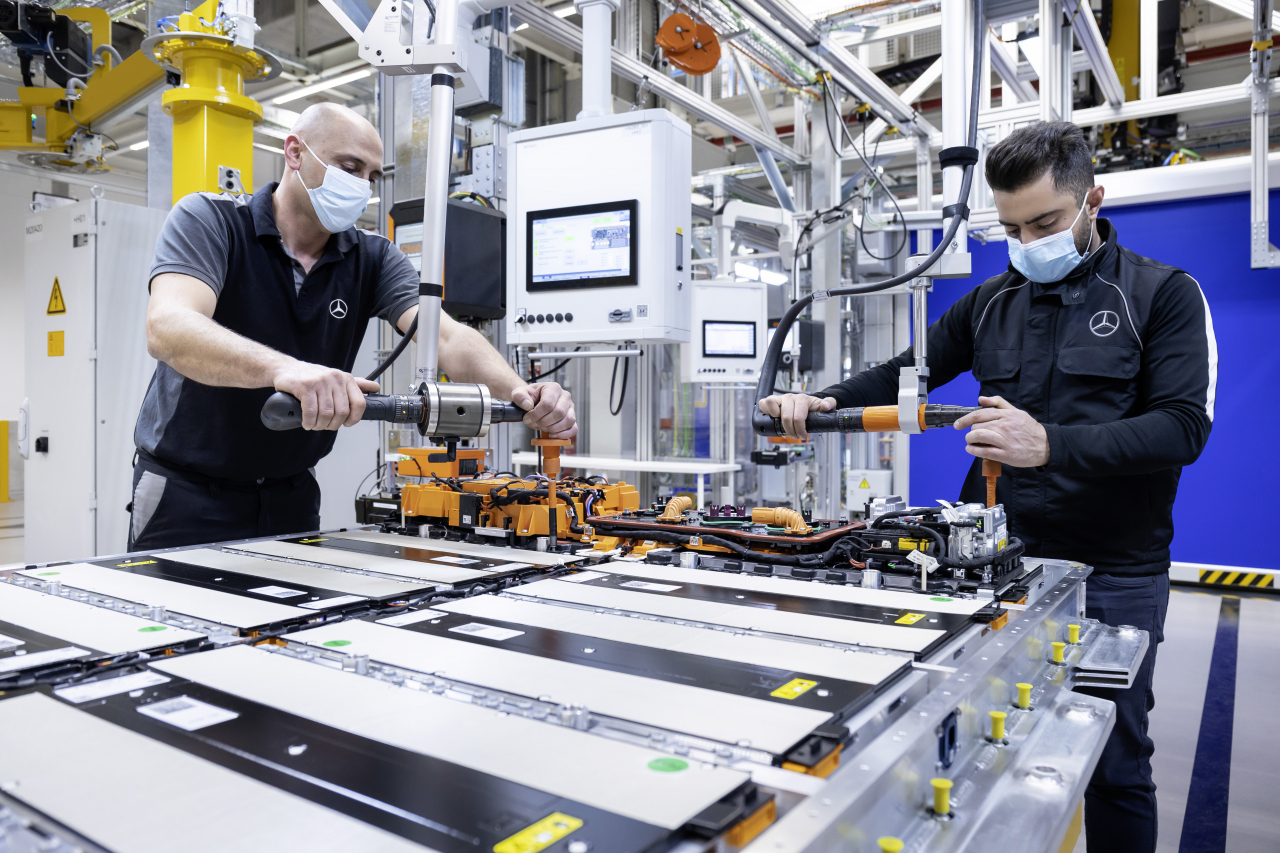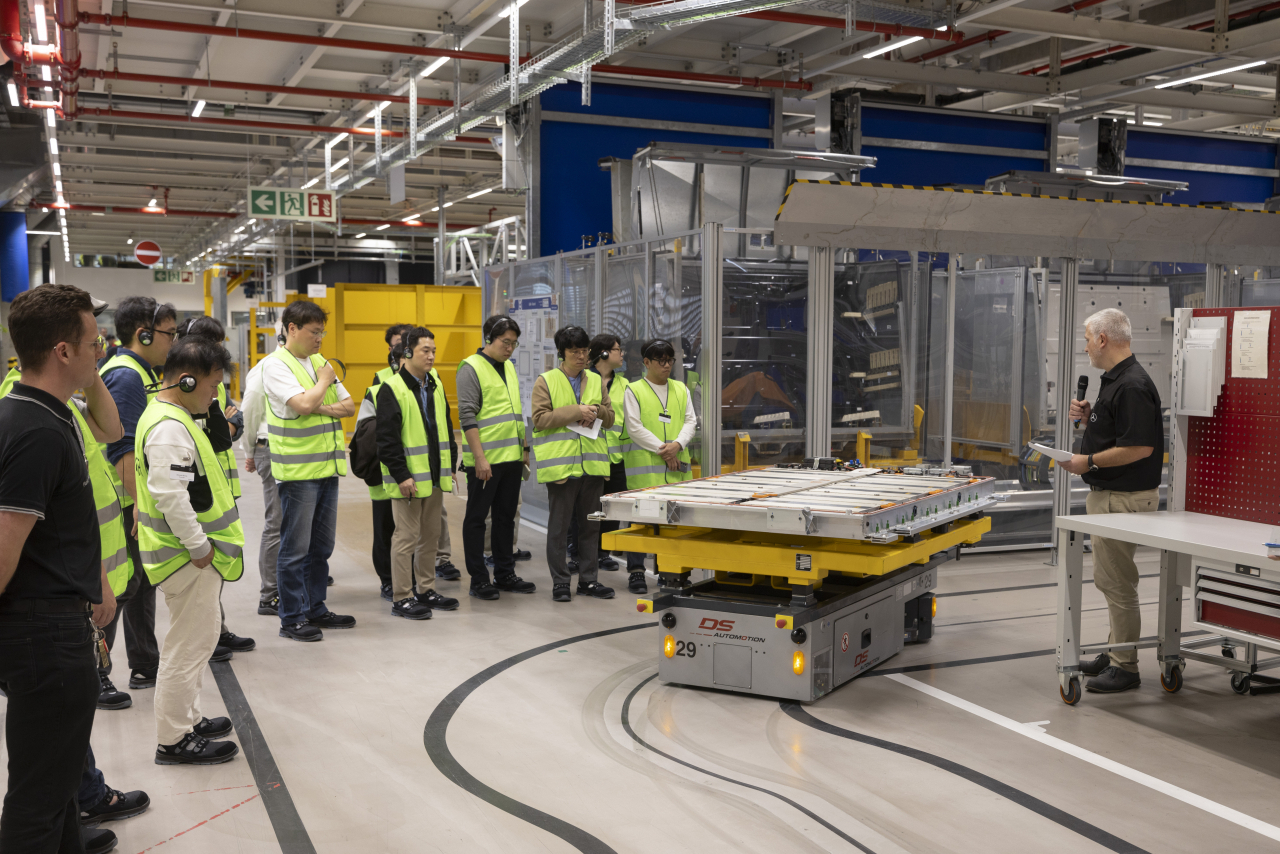[From the Scene] A rare glimpse into Mercedes' data-driven battery assembly

On Oct. 22, Mercedes-Benz’s Hedelfingen facility showcased its highly automated assembly process for EQS and EQE battery packs to visiting Korean reporters, a system that the company claims enhances quality and consistency. (Mercedes-Benz)
HEDELFINGEN, Germany -- At Mercedes-Benz’s battery production facility in Hedelfingen, Stuttgart, a group of Korean reporters was recently given a close-up look at how the automaker assembles the battery packs that power its flagship electric vehicles, the EQS and EQE.
The visit offered a rare glimpse into the detailed, highly automated process that Mercedes-Benz takes on to ensure the reliability of its EV batteries.
“Every little part is recorded and can be kept for up to 30 years and traced back to the end,” said Frank Frosch, team leader of battery production at Hedelfingen.
This level of documentation means that if a defect or safety issue ever arises, Mercedes-Benz has the data to trace the problem back to its source. For consumers in Korea, where EV battery fires have stirred public concern, this traceability offers a sense of security.
A facility designed for traceability
The Hedelfingen plant, sprawling over 16,500 square meters, maintains a carefully controlled indoor temperature of 20 to 25 degrees Celsius, designed to keep the sensitive battery materials stable during assembly. Here, battery systems for the EQS and EQE are put together for most of the world -- excluding China -- and these batteries power vehicles that will end up on roads in regions from Europe to South Korea.
Mercedes-Benz operates similar battery facilities in Kamenz and Bruhl in Germany, along with plants in Poland, the US, China and Thailand.

Technicians at Mercedes-Benz’s Hedelfingen facility conduct precision assembly of EQS and EQE EV battery packs. (Mercedes-Benz)

Korean reporters observe an automated guided vehicle transporting battery modules along the factory floor. (Mercedes-Benz)
Inside the plant, Mercedes-Benz’s production process leans heavily on automation. Automated guided vehicles zip along the factory floor, moving parts from station to station. Robotic arms apply thermal paste, vacuum up microscopic debris and measure cell height, while sensors track voltage, temperature and alignment. Human technicians remain on-site to verify the robots’ work and ensure standards are met, but it’s clear that automation dominates the process.

A structured camera array at Mercedes-Benz’s Hedelfingen facility records each phase of battery assembly. (Mercedes-Benz)
In one key part of the assembly line, 12 battery cell modules and vital power electronics are joined inside a compartment. Mercedes-Benz uses dozens of cameras to record each angle and torque setting, right down to the 150 screws used in each battery pack. “Each part has an identification number, and the work is recorded by the cameras,” Frosch explained. The hope is that by capturing every step, Mercedes-Benz can identify the root cause of any issues, whether they occur immediately or years down the road.
This level of documentation has already been tested. When a recent fire incident involving a Mercedes-Benz EV battery in South Korea prompted an investigation, Mercedes-Benz was able to supply detailed records on the Farasis battery’s components and assembly.
High-tech leak detection
One of the most critical quality tests for these battery packs is making sure they’re fully sealed and leak-proof. After the battery cells are encased in their housing, helium gas is injected into the unit. Why helium? It’s an ideal choice for leak detection because it’s extremely sensitive to even the smallest of flaws. A robotic arm equipped with a thin probe then checks for any sign of gas escaping. If it finds a leak, the process stops immediately, and technicians fix the problem before starting again.

Korean reporters witness a Mercedes-Benz technician demonstrating the helium leak test chamber, where robotic arms detect microscopic leaks in EV battery packs to ensure airtight sealing and safety. (Mercedes-Benz)
“Helium is expensive, but it’s the best option for this type of test,” Frosch said. The result of this rigorous testing? Less than 1 percent of batteries produced here have any detectable defect, according to Mercedes-Benz.
Once the batteries pass their final inspections, they’re serialized and shipped off to the automaker’s vehicle assembly plants. Batteries destined for the EQE head to Bremen, while those for the EQS go to Factory 56 in Sindelfingen, where they’ll be integrated into the final vehicles.
The Hedelfingen plant is part of a much larger effort by Mercedes-Benz to control its EV battery supply chain. Nearby, Mercedes-Benz has established the eCampus, a research center focused on advanced battery technology, as well as a recycling facility dedicated to processing waste battery materials.
By Moon Joon-hyun (mjh@heraldcorp.com)
EDITOR'S PICKS
- SK hynix unveils 2025 shipment plans for most up-to-date HBM chip
- SK chief vows to tackle AI bottleneck along with Nvidia, TSMC
- Korean luxury e-boutique Jente launches global service
- Hyosung hits W1tr in power equipment orders in Europe
- ‘Free delivery’ promotions under antitrust scrutiny
- [From the Scene] A rare glimpse into Mercedes' data-driven battery assembly
- SK On reports first-ever profit in Q3
- SK Eternix secures W461b funding for fuel cell projects











![[From the Scene] A rare glimpse into Mercedes' data-driven battery assembly](http://res.heraldm.com/phpwas/restmb_idxmake.php?idx=141&simg=/content/image/2024/11/04/20241104050534_0.jpg)



